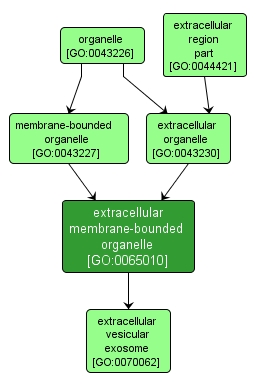GO TERM SUMMARY
|
| Name: |
extracellular membrane-bounded organelle |
| Acc: |
GO:0065010 |
| Aspect: |
Cellular Component |
| Desc: |
Organized structure of distinctive morphology and function, bounded by a lipid bilayer membrane and occurring outside the cell. |
Synonyms:
- extracellular membrane-enclosed organelle
|
|

|
INTERACTIVE GO GRAPH
|














